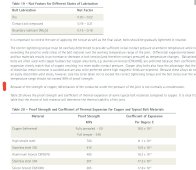Hedges
I See Electromagnetic Fields!
- Joined
- Mar 28, 2020
- Messages
- 20,600
Here's an article on a previous method for fixing aluminum house wire. (now superseded by other techniques.)
Note the idea of applying a corrosion inhibitor and scrubbing off oxide through the inhibitor.
They also favor non-flammable corrosion inhibitor.
Welded stud offers 0.111 square inches contact area? That's like 2/0 cross section.
The issue is contact patches, not overall area. For a given pressure, I don't think 0.111 in^2 is better than 0.290 in^2
Just give me more torque.
Note the idea of applying a corrosion inhibitor and scrubbing off oxide through the inhibitor.
They also favor non-flammable corrosion inhibitor.
Welded stud offers 0.111 square inches contact area? That's like 2/0 cross section.
The issue is contact patches, not overall area. For a given pressure, I don't think 0.111 in^2 is better than 0.290 in^2
Just give me more torque.



